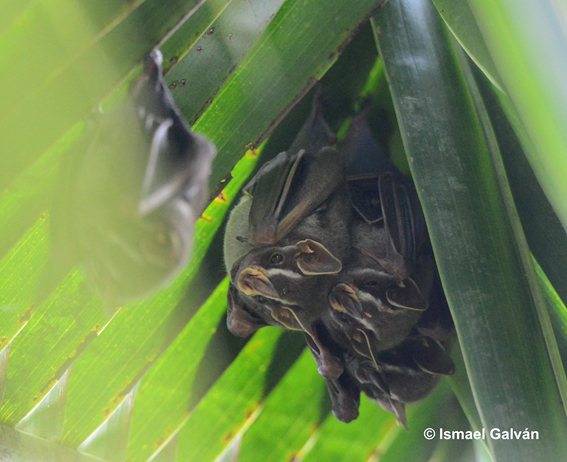The recent discovery of the first mammal that deposits significant amounts of carotenoid pigments in the skin (the Honduran white bat Ectophylla alba) has highlighted the presence of conspicuous yellow coloration in the bare skin of some bats. This is patent in the subfamily Stenodermatinae, where many species build tents with plant leaves for communal roosting at daytime. On the basis that tents offer rich light conditions by partly allowing sunlight to pass through the leaves and this makes that yellow coloration probably provides camouflage benefits to tent?roosting bats; that gregariousness facilitates visual communication; and that all Stenodermatinae bats possess retinal L?cones that allow the perception of long?wavelength light and have a frugivorous diet from which carotenoids are obtained, authors hypothesized that tent?roosting may have driven the evolution of yellow skin coloration in this group of bats. This prediction was tested in 71 species within Stenodermatinae. Reconstructions of ancestral states showed that the common ancestor was most likely not colorful and did not roost in tents, but both traits early appeared in the first phylogenetic ramification. Phylogenetically controlled analyses showed that, as predicted, yellow skin coloration and tent?roosting coevolved after their appearance. This is the first explanation for the evolution of body coloration in nocturnal mammals. As the light environment of nocturnal forests is dominated by yellow?green wavelengths that coincide with the spectral sensitivity of some bats, nocturnal light conditions may have acted jointly with diurnal light conditions in tents to favor the evolution of yellow skin coloration in these animals. informacion[at]ebd.csic.es: Galván et al (2019) Tent-roosting may have driven the evolution of yellow skin coloration in Stenodermatinae bats. J Zool Syst Evol Res https://doi.org/10.1111/jzs.12329
https://onlinelibrary.wiley.com/doi/10.1111/jzs.12329

 Las altas temperaturas están provocando que las lagunas y las marismas de Doñana pierdan agua rápidamente
Las altas temperaturas están provocando que las lagunas y las marismas de Doñana pierdan agua rápidamente




